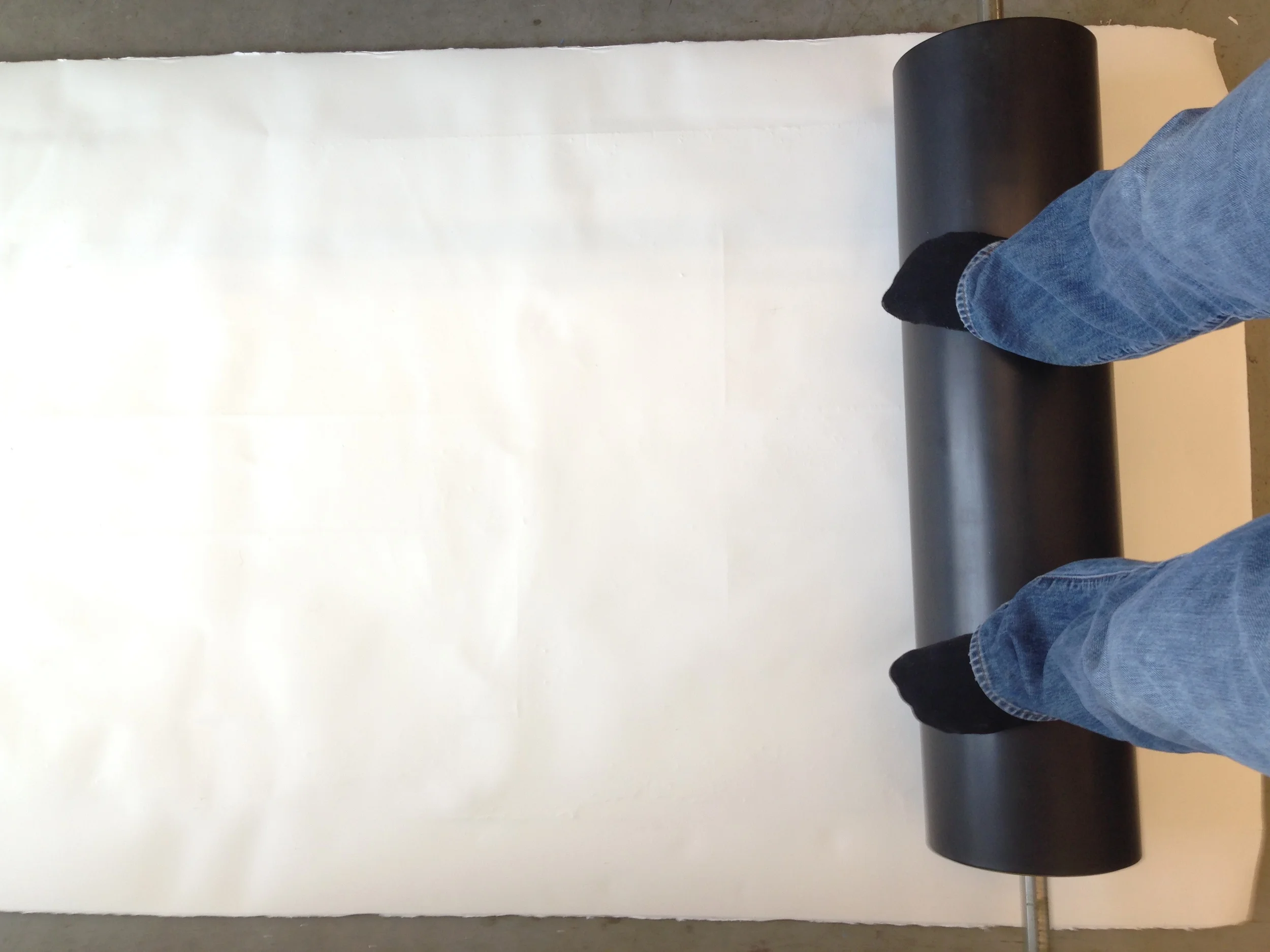-click on any image for a closer view-
This process started with a door I found in the senior painting studio. I propped it up against a wall for several days, thinking I might paint on it for fun. But every time I walked by the door, I was drawn to its aged surface. Several layers of chipping paint revealed a slow, ambling history. I started thinking about places the door might have been, and what kind of rooms it might have ushered people into. Alone, leaning against a wall, it had a serious manner to it that bordered on being religious. Since I'd printed household things like mattress pads before, I decided one day that I wanted to print the surface of the door and show some of that texture and history on paper.
I thought I might be able to print it using our press. The length of the door was not a problem, but it was just about 2 cm too thick to fit between the press bed and the roller. This meant I would have to hand-press the door.
I cleaned the door and peeled of some really loose paint flakes. Using standard printmaking brayers and a mix of cobalt, ultramarine, and titanium white, I carefully inked the door. The panels didn't get inked because they were at a lower depth so they would be hard to print.
Time for a test print. I would do most of the pressing using a large litho roller I found.
I used cheap paper for the test. Since the door was so large, I had to improvise a little. After I laid the paper down, I stood on the roller, braced myself between two tables and slowly walked it across the door. The hope was to get a consistent print. As you can see in the images below, it didn't work very well.
Now for the real paper. I used a large roll of Arches paper, roughly 4'x 8'. It was too large to soak in the normal trays, so I tried to dampen it as evenly as I could with wet towels.
I decided to use the roller again, and then hand press with direct pressure on the corners and other tough spots. I used extra paint this time. The result was stunning.
The print produced some interesting textures that you can see below. I left it sideways because I like the simple asymmetry and the way it plays on the ideas of both a door and a window.
Ryan


















